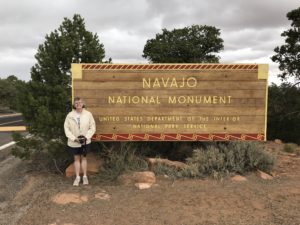 The Navajo Nation owns the biggest piece of Arizona of anyone except the Federal Government. Their reservation in northeastern Arizona is huge, especially compared to the Southern Paiutes in northwestern Arizona. The Navajo have the largest tribal population, so it seems right that they have so much land. After hearing about the Navajo for so much of the summer, Tom and I looked forward to learning more about them at Navajo National Monument.
The Navajo Nation owns the biggest piece of Arizona of anyone except the Federal Government. Their reservation in northeastern Arizona is huge, especially compared to the Southern Paiutes in northwestern Arizona. The Navajo have the largest tribal population, so it seems right that they have so much land. After hearing about the Navajo for so much of the summer, Tom and I looked forward to learning more about them at Navajo National Monument.
Except the name is a misnomer. Although the monument is located on the Navajo Reservation, the Navajo National Monument preserves ruins of the Ancestral Puebloans. Thus Tom and I started a journey of discovery about the Ancestral Puebloans that would last until we left New Mexico.
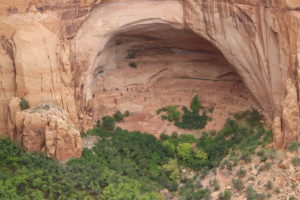
We first encountered the Ancestral Puebloans years ago when we visited Mesa Verde. Historically, these dwellings were said to belong to the Anasazi. But the term “anasazi” means “ancestors of the enemies” so the term is not used much today. The Ancestral Puebloans were a robust population of indigenous people who developed agriculture in the arid Four Corners region. They lived in the area from about 800 until 1300. They built distinctive stone villages, often in remote locations. When the area suffered from a severe drought around 1300, the people left these villages to settle near reliable water sources. The Hopi and Zuni are two tribes descended from these ancient people.
Today Navajo National Monument preserves Keet Seel, Betatakin, and Inscription House, three villages of the Ancestral Puebloans. All these villages are built into alcoves above Betatakin Canyon. We were only able to see one of these villages. By following the Sandal Trail, we came to the overlook for Betatakin.
At the overlook, we looked down into an alcove that is 450 feet high, 370 feet wide, and 135 feet deep. A village of 135 rooms that housed about 100 people is nestled in the alcove. The village was only occupied for 50 years. When the prolonged drought made agriculture impossible, the people left Betatakin and moved on.
The overlook was as close as we could get to Betatakin. Ranger guided tours on strenuous trails are the only way to get any closer and the tours are only given once a week. I was satisfied to see the village from afar. The closer people get, the more possibility there is for damage. Human interaction with ancient artifacts seldom turns out well for the artifacts.
Tom and I watched the short movie, looked at the museum, stamped my book, and moved on down the road. Navajo National Monument is beautiful, but doesn’t require a long visit unless you plan on taking a ranger-guided hike.

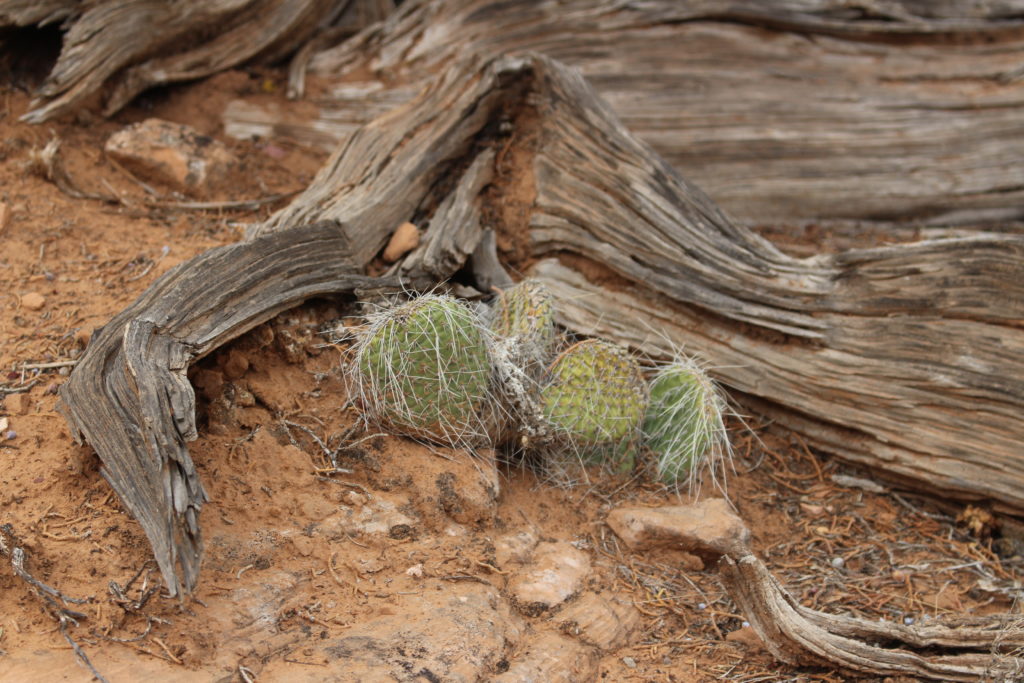
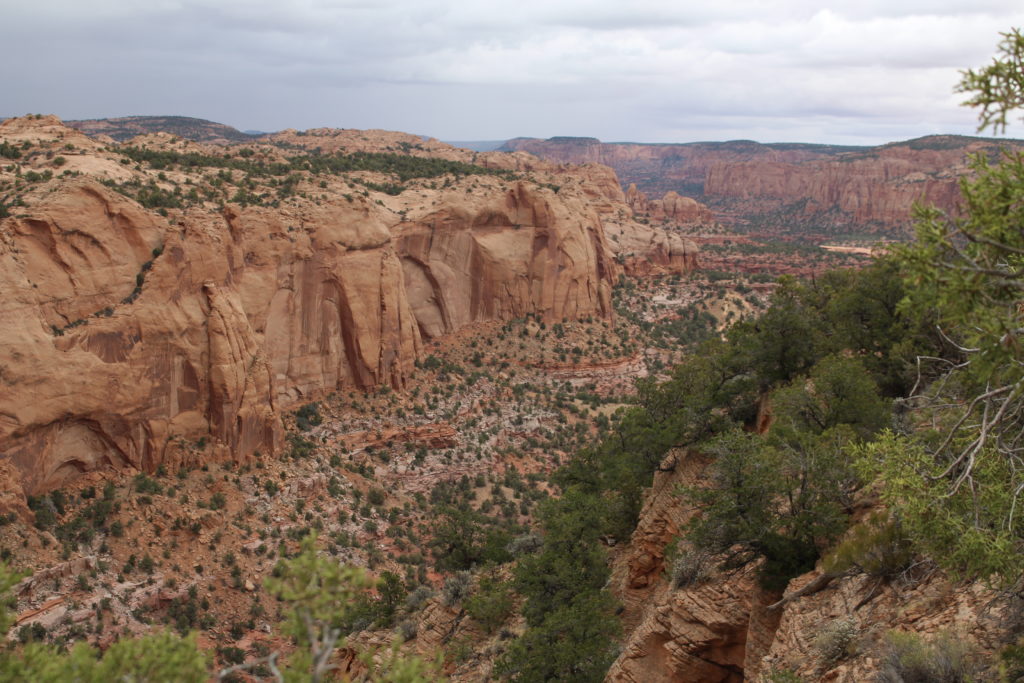
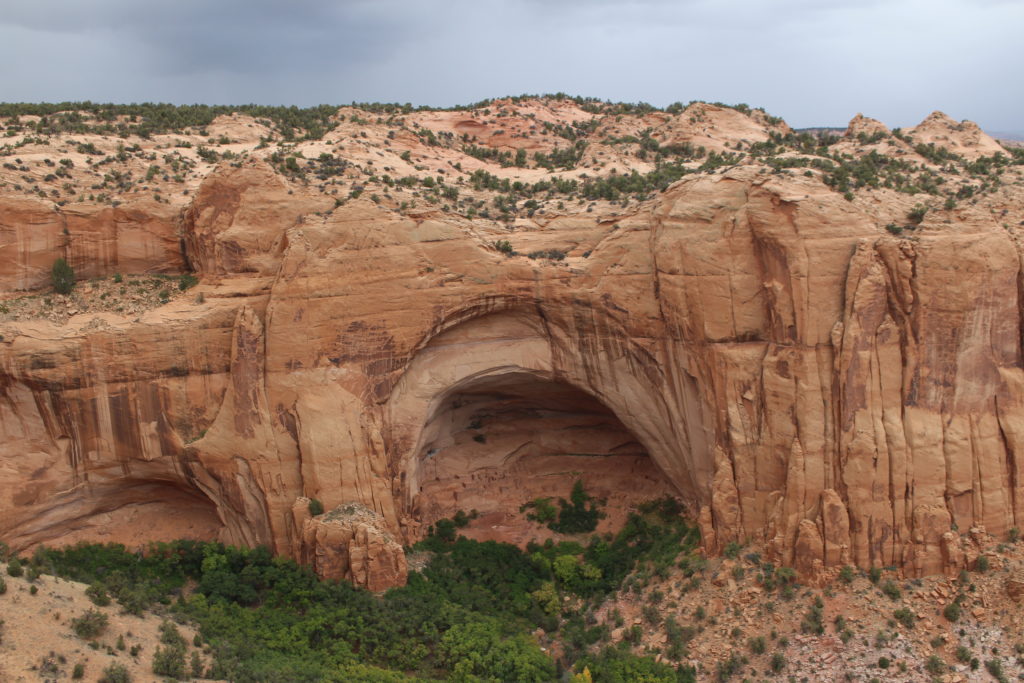
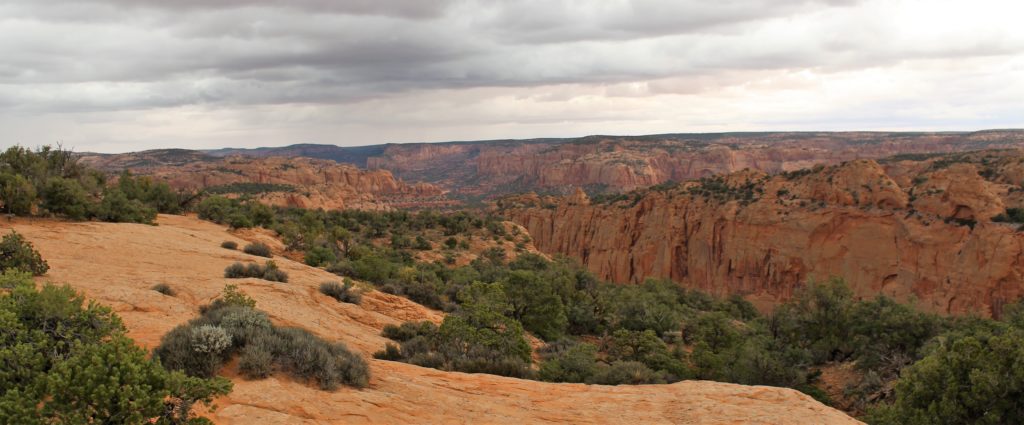
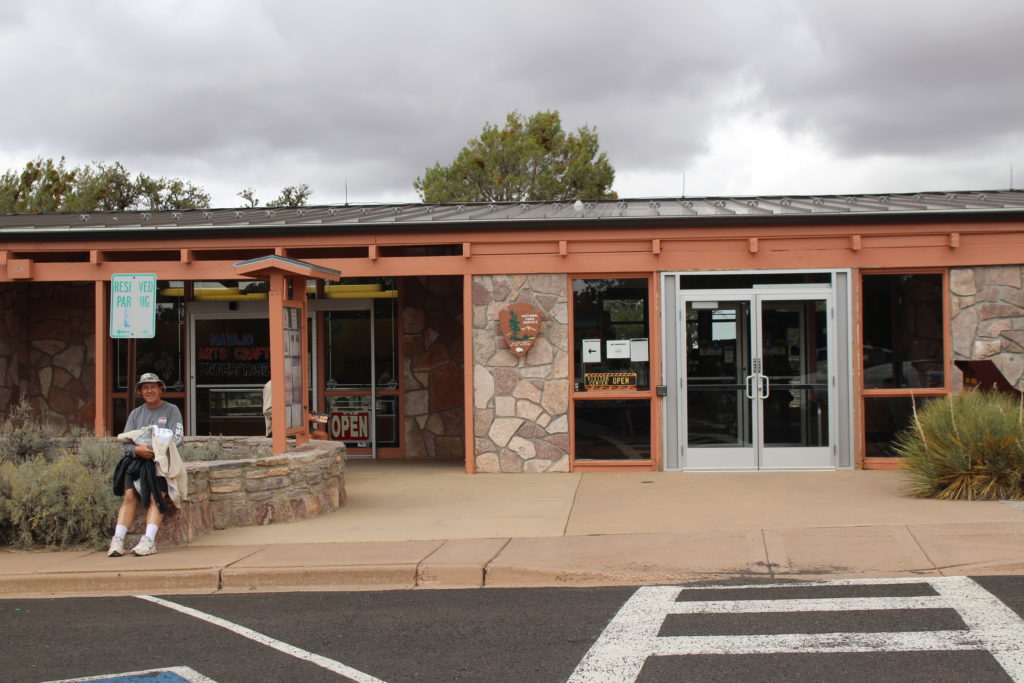
One comment